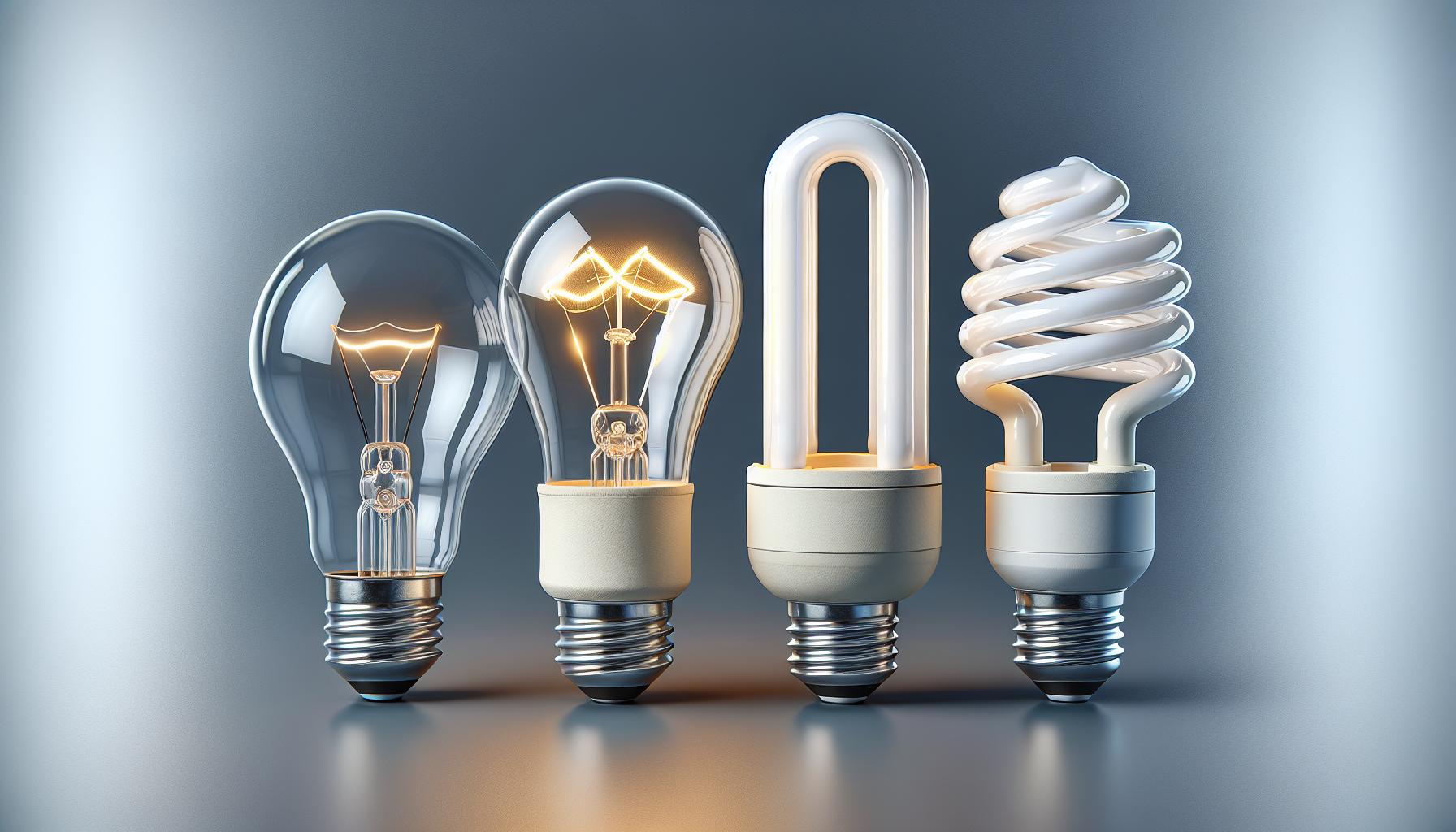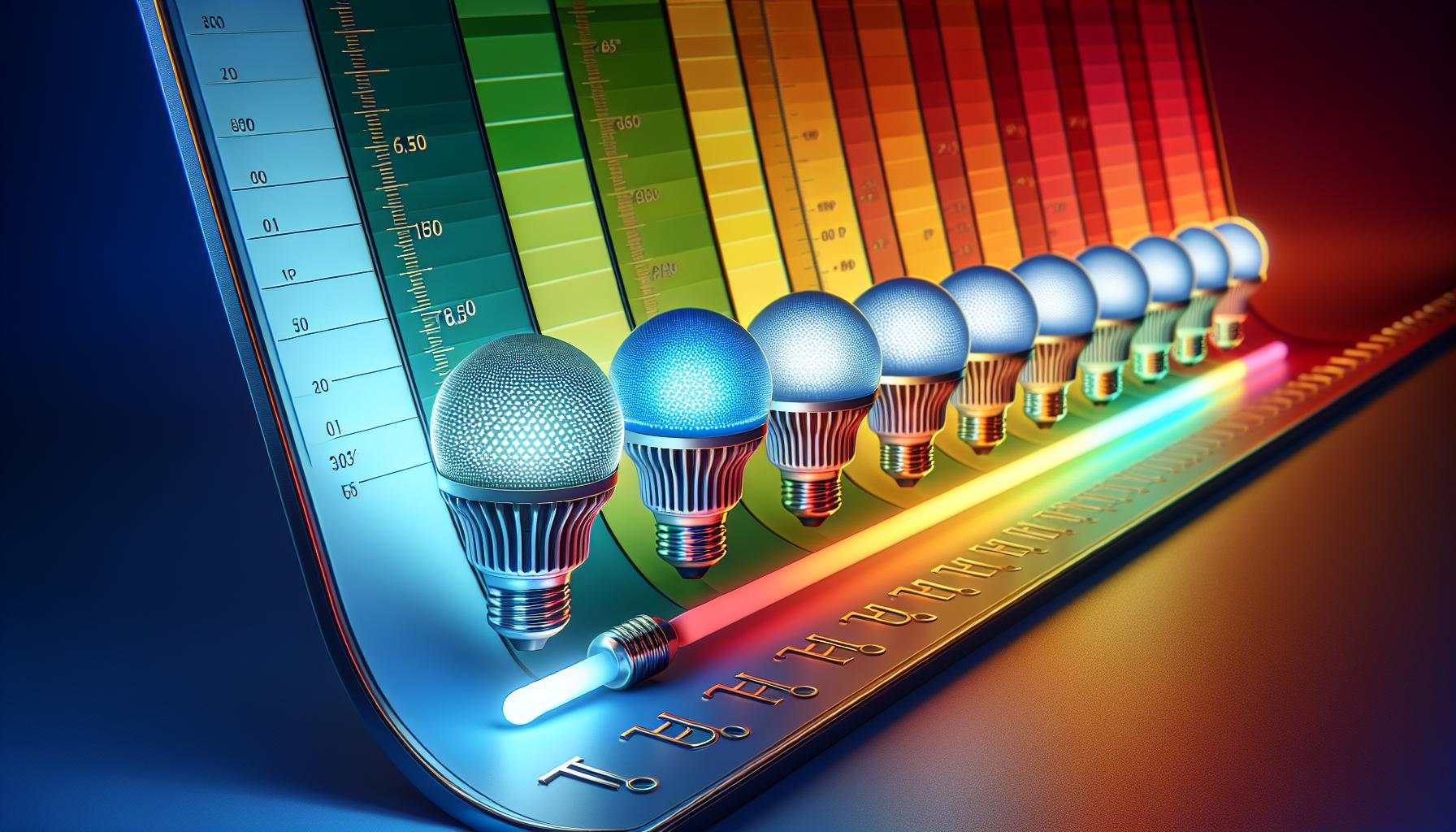Ever found yourself wondering why some rooms feel warmer than others, even with the AC cranking? Well, it might just be the light bulbs you’re using. Yep, those little beacons of brightness can turn into mini heaters, but don’t sweat it—you’ve got options.
In the quest for a cooler bulb, you’ll discover that not all light sources are created equal. Some stay as chill as a cucumber, while others could cook an egg! Let’s shed some light on the coolest choices for your lamps and fixtures, ensuring you stay comfortable without compromising on luminosity.
Why Light Bulbs Produce Heat
When you flick on a light switch, you’re not just illuminating your space; you’re setting off a fascinating process where electricity transforms into light and heat. Sure, the primary goal is to cast light, but the heat is a byproduct you can’t ignore.
The Science Behind the Glow
Incandescent bulbs, your old-school option, work by sending an electric current through a thin filament, typically made of tungsten. The resistance in the filament causes it to heat up, glowing white-hot, and voilà, you’ve got light. However, this process isn’t exactly a shining example of efficiency. Only about 10% of the energy used by the bulb generates light—the rest becomes heat. It’s that very inefficiency that can make a room feel like a sauna during a warm summer evening.
Modern Alternatives
Turning to LEDs or CFLs, you’ll find a cooler room and a happier you. LEDs use a semiconductor to produce light, which significantly cuts down the heat output. The material inside the bulb excites electrons to create photons—nerdy talk for “light particles.” This method is more like sipping electricity, rather than guzzling it, so less heat is produced.
Compact Fluorescent Lamps (CFLs) are another cool choice. They work by driving an electric current through a tube containing argon and a small amount of mercury vapor. This generates UV light, which then interacts with a fluorescent coating inside the tube to create visible light. Apologies if that took you back to your high school physics class! The takeaway here is that CFLs emit less heat compared to incandescents, but not quite as little as LEDs.
To help you visualize the heat produced by different kinds of bulbs, check out this quick comparison:
| Bulb Type | Approximate Heat Emitted |
|---|---|
| Incandescent | High |
| CFL | Medium |
| LED | Low |
Armed with this knowledge, you’ll know that swapping out light bulbs isn’t just about the lumens and lifes pan. It’s about finding that sweet spot where comfort and efficiency meet. Next time you’re planning a lighting overhaul for your DIY home project consider the warmth—not just in color but the actual heat discharged—and choose the bulb that suits your needs while keeping cool.
The Different Types of Light Bulbs
When you’re looking to light up your life—or at least your living room—knowing the types of light bulbs available can help you make the best choice for both brightness and heat production. Here’s a rundown of the main contenders:
Incandescent Bulbs
These are your classic bulbs, the ones with a warm glow you might associate with a cozy evening at home. They work by passing electricity through a wire filament until it’s hot enough to glow. However, they’re not just dispensing light; they’re throwing out heat too, like tiny little ovens for your lamps.
Compact Fluorescent Lamps (CFLs)
CFLs are the curlier versions of the classic tube fluorescent lights you’ve seen in offices and garages. They use an electric current to excite gas inside the bulb, creating ultraviolet light that then stimulates a fluorescent coating on the inside of the bulb to produce visible light. CFLs are cooler than incandescent bulbs but they still generate some heat.
Light Emitting Diodes (LEDs)
LEDs are the new kids on the block when it comes to home lighting and they’re quickly becoming popular favorites. They produce light by moving electrons through a semiconductor material. Because of their energy-efficient design, LEDs emit very little heat compared to other bulbs on the market.
Important Facts to Remember:
- Incandescent bulbs are the least energy-efficient and produce the most heat.
- CFLs offer better energy efficiency with moderate heat output.
- LEDs are the most energy-efficient and produce the least amount of heat.
« Are 3 Way Light Bulbs the Same as Dimmable? Unveil the Surprising Differences
What Causes Light Bulbs to Blow? Avoid These Common Mistakes »
When it comes to DIY home projects, factoring in the type of lighting you choose can significantly impact the atmosphere and comfort of your space. Plus, with an eye toward efficiency, you’re not only creating a comfortable environment but you’re also keeping a lid on your energy costs. Who says you can’t be both a lighting and a DIY pro?
Incandescent Bulbs: The Heat Kings
When you’re working on a DIY home project, you might be tempted to stick to traditional incandescent bulbs. They’ve been around since the days of Thomas Edison, and their warm glow is familiar and comforting. But heat generation is where they really stand out – and not necessarily in a good way.
Incandescent bulbs operate by heating a thin filament to a temperature that produces light. It’s a simple but inefficient process, as the majority of energy consumed goes into creating heat rather than light. If you’ve ever tried to change a bulb shortly after turning off the light, you’ve felt this heat firsthand.
The heat output from incandescent bulbs is substantial. They can act like miniature heaters, which is probably the last thing you want in the summer months. In a small room, a few incandescent bulbs could actually raise the ambient temperature, making your air conditioning work harder and increasing energy bills.
So, while the allure of incandescent lighting might be strong, think about the heat output. Especially in a DIY project where comfort and cost-efficiency are key, it’s essential to weigh the atmospheric gains against the practical downsides.
Remember that with incandescent bulbs, about 90% of the energy used is emitted as heat, leaving only a fraction for actual illumination. With advancements in bulb technology, there are alternatives available that keep your space bright and your surfaces touchable.
You’ll find that in spaces where you require a cooler environment or for lighting fixtures close to where people or pets might pass by, considering a switch to more efficient bulbs is not only practical but safer. The lower heat output will make your DIY project shine without contributing to a rise in your room’s thermometer.
Halogen Bulbs: The Cooler Alternative
When you’re knee-deep in a DIY home project, one thing you don’t want to worry about is excess heat from your lighting. Halogen bulbs offer a not-so-common but effective solution to the heat dilemma that often accompanies incandescent bulbs.
Halogen bulbs are in the same family as incandescents, but here’s where they shine: they’re more efficient. These bulbs are filled with a halogen gas that allows them to burn hotter while using less energy. This may sound contradictory, but because they operate at a higher temperature, the filament lasts longer, which ensures the bulb is brighter and whiter than what you’d get from a traditional incandescent.
Sure, you might be thinking, “Doesn’t burning hotter mean more heat?” Well, that’s not quite the case. Due to their design that includes a compact filament, halogen bulbs actually produce a more controlled and directed light, which in turn means that they become a slightly cooler option as they dissipate heat more effectively in comparison to their incandescent cousins. They’re often used in track lighting or recessed fixtures, where directing light is essential, and where heat build-up could become an issue.
Let’s talk numbers for a moment:
| Type | Lifespan | Efficiency |
|---|---|---|
| Incandescent | Short (~1,200 Hours) | Low |
| Halogen | Moderate (~2,000 Hours) | Better |
With its moderate lifespan and better efficiency, a halogen bulb could be your middle-ground choice. If you’re looking to step up your game to an even less heat-producing bulb, then stay tuned. Next, we’ll explore some options that are ideal for those of you aiming for maximum efficiency and minimum heat emission. These alternatives will have you rethinking everything you thought you knew about lighting in home projects.
LED Bulbs: The Coolest Choice
After delving into the benefits of halogen bulbs for your DIY lighting endeavors, you might be wondering what’s even cooler, both literally and figuratively. Look no further than LED bulbs. When you’re aiming to keep your projects both bright and temperature-manageable, LEDs stand out as the clear winner.
LEDs, or Light Emitting Diodes, are the superheroes in the lighting spectrum. They use a process that involves the movement of electrons to emit light, which differs greatly from the heat-generated glow of incandescent and halogen lights. Because of this unique technology, LEDs don’t waste energy on heat, meaning almost all the energy they consume is used for lighting.
Let’s talk efficiency. LEDs are unparalleled in this department. Check out how they stack up against incandescent and halogen bulbs:
| Bulb Type | Average Lifespan | Energy Used |
|---|---|---|
| Incandescent | 1,000 Hours | 60 Watts |
| Halogen | 2,500 Hours | 42 Watts |
| LED | 25,000 Hours | 10 Watts |
Seeing these numbers, you’ll notice that LEDs are not just cooler; they’re in it for the long haul. With a lifespan that’s at least 10 times longer than that of halogen bulbs, it’s clear that LEDs are a serious contender for your long-term projects.
Still wondering about the heat? Because they operate so efficiently, LEDs remain cool, reducing the risk of heat damage to your delicate DIY projects. Plus, they don’t emit UV rays, which means they’re safer for use around items that might fade or degrade with exposure to such light.
As you go about choosing the perfect bulb, consider the color temperature of LED lights as well. Available in a spectrum from warm to cool white, they allow for customization to set the perfect mood for your space while maintaining a low heat profile. Pair this with dimmable options, and your lighting can adapt to whatever task you’ve got on hand.
Remember, with LEDs lighting your way, you’re doing more than just illuminating your home; you’re lighting it smarter and cooler.
Conclusion
So there you have it! When you’re looking to keep things cool, especially with your DIY lighting projects, LED bulbs are your best bet. They’re not just about energy efficiency; they’re about keeping your space—and your projects—safe from the heat. Plus, with the added bonus of no UV emissions and customizable color temperatures, LEDs offer versatility that’s hard to beat. Remember, when you choose LEDs, you’re making a choice that’s cool in every sense of the word. Happy lighting!
Frequently Asked Questions
What makes halogen bulbs cooler than incandescent bulbs?
Halogen bulbs are more energy-efficient, have a longer lifespan, and produce a brighter and whiter light. They burn hotter but use less energy, making them a cooler option for lighting projects.
How do LED bulbs compare to halogen bulbs for DIY projects?
LED bulbs are the coolest option for DIY lighting projects, as they are highly efficient, emit no UV rays, and maintain a cool temperature during operation. They also offer a much longer lifespan than halogen bulbs.
Why are LED bulbs considered safer for DIY projects?
LED bulbs are safer for DIY projects because they stay cool, reducing the risk of heat damage, and do not emit UV rays, which can cause items to fade or degrade.
Can the color temperature of LED lights be customized?
Yes, the color temperature of LED lights can be customized, allowing for personalization of lighting according to the desired ambiance.
Are there dimmable options available for LED lights?
Yes, dimmable LED options are available, providing versatility and control over the lighting intensity in your DIY projects.





